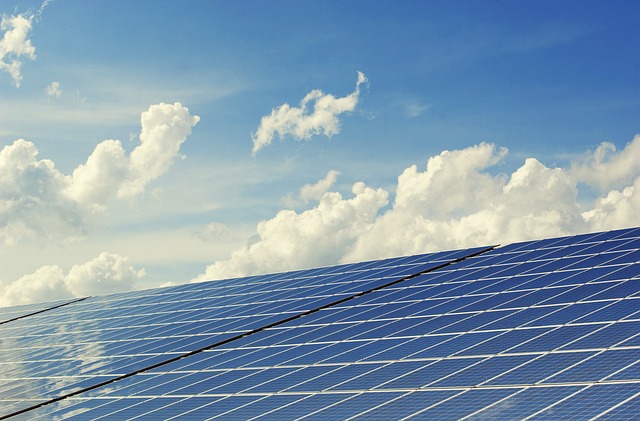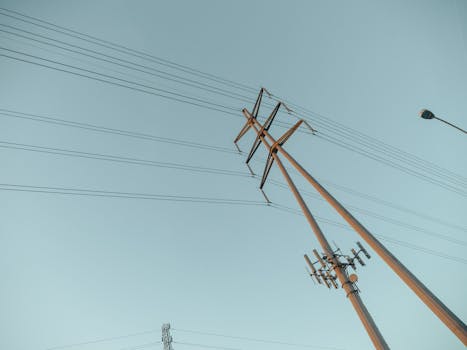“Power Your World: Simple Steps to Wire a Solar Panel to a DC Load!”
Wiring a solar panel to a DC load is a straightforward process that allows you to harness solar energy for various applications, such as powering lights, fans, or small appliances. This guide will outline the essential steps and components needed to connect a solar panel directly to a DC load safely and efficiently. Understanding the basic principles of solar energy systems, including the importance of proper wiring, voltage compatibility, and load requirements, is crucial for ensuring optimal performance and longevity of your setup. By following these instructions, you can effectively utilize renewable energy to meet your power needs.
Understanding Solar Panel Wiring Basics
Wiring a solar panel to a DC load is a fundamental skill for anyone interested in harnessing solar energy for practical applications. To begin with, it is essential to understand the basic components involved in this process. A solar panel converts sunlight into direct current (DC) electricity, which can then be used to power various devices or stored in batteries for later use. The wiring setup is crucial, as it ensures that the energy generated by the solar panel is efficiently delivered to the load.
First, familiarize yourself with the solar panel specifications, particularly its voltage and current ratings. Most solar panels produce a nominal voltage of 12V, although there are variations depending on the type and size of the panel. Knowing the output voltage is vital because it must match the requirements of the DC load you intend to power. For instance, if you are connecting a 12V battery or a 12V appliance, a 12V solar panel is ideal. However, if the load requires a different voltage, you may need to consider using a solar panel with a compatible output or employing a voltage regulator.
Once you have determined the appropriate solar panel, the next step is to gather the necessary tools and materials. You will need a set of wires, connectors, and possibly a charge controller if you are connecting the solar panel to a battery. The charge controller is an important component that regulates the voltage and current coming from the solar panel to prevent overcharging and damage to the battery. If you are directly powering a DC load without a battery, a charge controller may not be necessary, but it is still advisable to ensure the load receives a stable voltage.
With your materials ready, you can begin the wiring process. Start by connecting the positive terminal of the solar panel to the positive terminal of the DC load. This connection is typically made using a suitable gauge wire that can handle the current produced by the solar panel. It is important to use wires that are rated for outdoor use if the installation is exposed to the elements. Next, connect the negative terminal of the solar panel to the negative terminal of the load. This simple series connection allows the current to flow from the solar panel to the load, powering it effectively.
As you proceed, it is crucial to ensure that all connections are secure and insulated to prevent any short circuits or electrical hazards. Using heat shrink tubing or electrical tape can help protect the connections from moisture and corrosion, which can significantly impact performance over time. Additionally, if you are using a charge controller, connect the solar panel to the controller first, and then connect the controller to the battery or load, following the manufacturer’s instructions.
After completing the wiring, it is advisable to test the system to ensure everything is functioning correctly. Use a multimeter to check the voltage at the load to confirm that it matches the expected output from the solar panel. If the voltage is within the acceptable range, your solar panel is successfully wired to the DC load, and you can begin enjoying the benefits of solar energy. By understanding these basic wiring principles, you can confidently set up your solar panel system, paving the way for sustainable energy solutions in your daily life.
Selecting the Right Components for DC Load Wiring

When embarking on the journey of wiring a solar panel to a DC load, selecting the right components is crucial for ensuring efficiency, safety, and longevity of the system. The first step in this process involves understanding the specific requirements of your DC load. This includes determining the voltage and current ratings, as well as the overall power consumption. By knowing these parameters, you can select components that not only match the load specifications but also optimize performance.
Once you have a clear understanding of your load requirements, the next component to consider is the solar panel itself. Solar panels come in various wattages and voltages, so it is essential to choose one that aligns with your load’s needs. For instance, if your load operates at 12 volts, a 12-volt solar panel would be ideal. However, it is also important to account for factors such as sunlight availability and seasonal variations, which may necessitate a panel with a higher wattage to ensure adequate power generation throughout the year.
In addition to the solar panel, you will need a charge controller, which plays a vital role in regulating the voltage and current coming from the solar panel to the load. This component prevents overcharging and protects the load from voltage spikes, thereby extending the lifespan of both the solar panel and the connected devices. When selecting a charge controller, ensure it is compatible with the voltage of your solar panel and can handle the maximum current output. There are two main types of charge controllers: PWM (Pulse Width Modulation) and MPPT (Maximum Power Point Tracking). While PWM controllers are generally more affordable, MPPT controllers are more efficient, especially in situations where the solar panel voltage is higher than the load voltage.
Next, consider the wiring and connectors that will link your solar panel to the load. The gauge of the wire is critical, as it must be capable of handling the current without overheating. A wire that is too thin can lead to energy loss and potential hazards. Therefore, it is advisable to consult a wire gauge chart to determine the appropriate size based on the current and distance between the solar panel and the load. Additionally, using connectors that are rated for outdoor use will ensure durability and reliability in various weather conditions.
Furthermore, incorporating fuses or circuit breakers into your system is a wise decision. These safety devices protect against overcurrent situations that could damage your components or create fire hazards. When selecting a fuse or circuit breaker, choose one that matches the current rating of your load and is suitable for DC applications. This precaution not only enhances safety but also provides peace of mind as you operate your solar-powered system.
Lastly, consider any additional components that may enhance your setup, such as battery storage systems. If your application requires power during periods of low sunlight, integrating a battery can store excess energy generated during the day for use at night or during cloudy days. This addition requires careful consideration of the battery type, capacity, and compatibility with your solar panel and charge controller.
In conclusion, selecting the right components for wiring a solar panel to a DC load involves a thorough understanding of your load requirements, careful selection of the solar panel and charge controller, appropriate wiring, and safety measures. By taking the time to choose quality components and ensuring compatibility, you can create a reliable and efficient solar power system that meets your energy needs effectively.
Step-by-Step Guide to Wiring Solar Panels to DC Loads
Wiring a solar panel to a DC load is a straightforward process that can significantly enhance your energy independence and sustainability. To begin, it is essential to gather the necessary materials, which typically include solar panels, a charge controller, appropriate wiring, connectors, and the DC load itself. Understanding the components involved is crucial, as each plays a vital role in ensuring the system operates efficiently and safely.
First, it is important to determine the specifications of your solar panel and the DC load you intend to power. Solar panels are rated by their voltage and current output, while DC loads can vary widely in their power requirements. By matching the voltage of the solar panel to the voltage of the load, you can avoid potential damage and ensure optimal performance. For instance, if you are using a 12-volt solar panel, your DC load should also be rated for 12 volts.
Once you have confirmed compatibility, the next step is to install the charge controller. This device is essential for regulating the voltage and current coming from the solar panel to the load, preventing overcharging and ensuring that the battery, if used, is charged correctly. To install the charge controller, connect the solar panel’s positive and negative leads to the corresponding terminals on the controller. It is crucial to follow the manufacturer’s instructions during this process, as improper connections can lead to system failure or safety hazards.
After securing the connections to the charge controller, the next step involves wiring the DC load. Begin by connecting the load’s positive terminal to the positive output terminal of the charge controller. Similarly, connect the load’s negative terminal to the negative output terminal of the charge controller. This configuration allows the charge controller to manage the power flow from the solar panel to the load effectively. It is advisable to use appropriately rated wires to handle the current, as undersized wires can lead to overheating and potential fire hazards.
As you proceed, it is essential to ensure that all connections are secure and insulated. Loose connections can result in voltage drops or arcing, which can damage components or create safety risks. Using heat shrink tubing or electrical tape can provide additional protection against moisture and corrosion, which are common issues in outdoor installations.
Once all connections are made, it is time to test the system. Before connecting the load, check the voltage at the output terminals of the charge controller using a multimeter. This step ensures that the system is functioning correctly and that the voltage matches the requirements of your DC load. If everything checks out, you can safely connect your load and monitor its performance.
In conclusion, wiring a solar panel to a DC load involves a series of methodical steps that, when followed carefully, can lead to a successful and efficient solar energy system. By understanding the components involved and ensuring proper connections, you can harness the power of the sun to meet your energy needs. As you gain experience with solar installations, you may find opportunities to expand your system, incorporating additional panels or batteries to enhance your energy capacity. Ultimately, the knowledge gained from this process not only empowers you to take control of your energy consumption but also contributes to a more sustainable future.
Common Mistakes to Avoid When Wiring Solar Panels
Wiring solar panels to a DC load can be a rewarding endeavor, but it is essential to approach the task with care and attention to detail. While the process may seem straightforward, several common mistakes can lead to inefficiencies, equipment damage, or even safety hazards. By understanding these pitfalls, you can ensure a successful installation that maximizes the performance of your solar energy system.
One of the most frequent errors occurs during the selection of components. It is crucial to match the solar panel’s voltage and current ratings with those of the DC load. Failing to do so can result in underperformance or, conversely, overloading the load, which may cause permanent damage. Therefore, always check the specifications of both the solar panel and the load to ensure compatibility. Additionally, using inappropriate wire sizes can lead to significant voltage drops, which diminish the efficiency of the system. It is advisable to consult wire gauge charts to determine the correct size based on the distance between the solar panel and the load.
Another common mistake is neglecting to incorporate proper fusing or circuit protection. Without adequate protection, a short circuit or overload can occur, potentially damaging the solar panel or the load. Installing a fuse or circuit breaker in line with the system can safeguard against these risks. It is also important to ensure that the fuse rating is appropriate for the current flowing through the circuit. This precaution not only protects your equipment but also enhances the overall safety of the installation.
Moreover, many individuals overlook the importance of grounding their solar panel systems. Grounding is essential for preventing electrical shocks and protecting against lightning strikes. Failing to ground the system can expose both the equipment and users to unnecessary risks. Therefore, it is vital to follow local electrical codes and guidelines when grounding your solar panel setup. This step not only ensures safety but also contributes to the longevity of your equipment.
In addition to these technical considerations, proper installation techniques are paramount. One common mistake is not securing the solar panels adequately. Loose panels can shift or become dislodged, especially in windy conditions, which can lead to misalignment and reduced efficiency. Ensure that the mounting hardware is robust and that the panels are securely fastened to their frames. Furthermore, be mindful of the orientation and tilt of the panels. Incorrect positioning can significantly impact energy production, so take the time to assess the optimal angle for maximum sunlight exposure.
Another area where mistakes often occur is in the wiring connections. Poor connections can lead to increased resistance, resulting in energy loss and potential overheating. It is essential to use high-quality connectors and ensure that all connections are tight and secure. Additionally, double-checking polarity is crucial; reversing the positive and negative connections can damage the load or the solar panel itself. Taking the time to verify connections can save you from costly repairs down the line.
Finally, it is vital to conduct regular maintenance checks on your solar panel system. Many users neglect this aspect, leading to unnoticed issues that can escalate over time. Regularly inspecting the wiring, connections, and overall system performance can help identify potential problems early, ensuring that your solar energy system operates efficiently and safely.
By being aware of these common mistakes and taking proactive measures to avoid them, you can successfully wire a solar panel to a DC load, maximizing the benefits of your solar energy investment. With careful planning and attention to detail, you can enjoy the advantages of renewable energy while minimizing risks and ensuring long-term performance.
Q&A
1. **Question:** What components are needed to wire a solar panel to a DC load?
**Answer:** You need a solar panel, a charge controller (if using a battery), appropriate wiring, a fuse, and the DC load.
2. **Question:** How do you connect the solar panel to the charge controller?
**Answer:** Connect the positive terminal of the solar panel to the positive input of the charge controller and the negative terminal of the solar panel to the negative input of the charge controller.
3. **Question:** How do you connect the charge controller to the DC load?
**Answer:** Connect the positive output of the charge controller to the positive terminal of the DC load and the negative output of the charge controller to the negative terminal of the DC load.
4. **Question:** What safety precautions should be taken when wiring a solar panel to a DC load?
**Answer:** Ensure all connections are secure, use appropriate wire gauges, install a fuse to protect against overcurrent, and avoid working in wet conditions to prevent electrical shock.
Conclusion
To wire a solar panel to a DC load, first ensure that the solar panel is properly mounted and positioned for optimal sunlight exposure. Connect the positive terminal of the solar panel to the positive terminal of the DC load and the negative terminal of the solar panel to the negative terminal of the DC load. If necessary, use appropriate gauge wiring to handle the current and ensure secure connections to prevent voltage drops. Finally, verify the connections and test the system to ensure the load is receiving power from the solar panel. Proper safety precautions should always be followed during installation.




